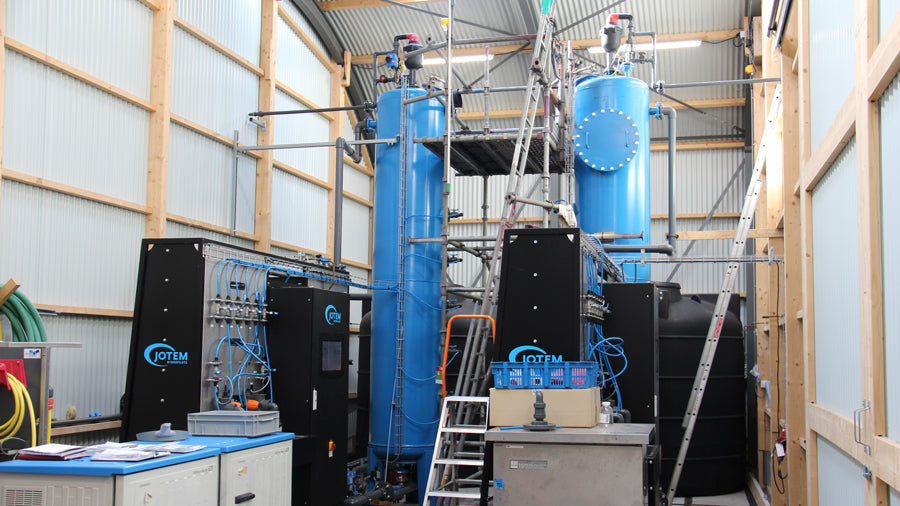
Unique BODAC technology prevents biofilm and removes medicine residues.
Share
This content is a production of Water Alliance.
After a successful pilot in New Amsterdam, Nieuwater is now conducting a pilot with Biological Activated Carbon Filtration with Oxygen Dosing (BODAC) at the wastewater treatment plant in Garmerwolde as part of the REGAIN project. 'This technique is unique worldwide; We receive many external visitors from home and abroad," says Gerrit Veenendaal, director of Nieuwater.
Nieuwater was created in 2004 as a collaboration between Watermaatschappij Drenthe and the Vechtstromen water board. The company works closely with the Wetsus research institute and the WLN water testing laboratory for its activities, as well as for the development of technologies such as BODAC.
One of the biggest challenges in water treatment plants is bacterial growth on reverse osmosis membranes, leading to clogging (biofilm). To prevent this, many companies traditionally add biocides to the water to be treated. The BODAC filter aims to eliminate the need for these environmentally harmful biocides, says Veenendaal.
Since 2011, the Ultrapure Water Factory in New Amsterdam has produced approximately 8,000 cubic meters of pure water every day, using sewage water as raw material. This pure water is used in the production of steam that is essential for oil extraction in a nearby oil field. The extreme purity ensures that the steam boiler and turbines remain clean and function virtually maintenance-free.
During the pilot, Nieuwater discovered that BODAC also removes micro-contaminants, including medicine residues. Veenendaal is still in the dark about how. “BODAC removes more than 80 percent of medicine residues. We know for sure that the substances are converted by bacteria into other substances or are broken down completely. How is the big question. It is a very complex process. Two PhD students are currently investigating this. ."
Three techniques for removing pharmaceutical residues will be tested over the next year and a half at the Garmerwolde wastewater treatment plant of the Noorderzijlvest water board. The removal efficiency of each technique will be evaluated, along with possible combinations as the most effective purification step. The research project, called REGAIN, required an investment of 3.5 million euros.
Veenendaal expects that BODAC technology will expand further in the coming years. He predicts considerable interest, especially in view of the WFD standards. “BODAC has proven itself in New Amsterdam, but does it also work in other locations? Commercially, it is very interesting for us to find out. If it works well at another location, there is nothing to stop us from using it commercially. Ultimately, we want to build a full-fledged installation at a sewage treatment plant. I hope that BODAC will be applied in Dutch and possibly also foreign sewage treatment plants in the coming years.”
Water Alliance is a network organization that, together with research institute Wetsus, CEW and CIV Water, forms an innovation chain for water technology on the Water Campus in Leeuwarden.
